Discovering Jesus in the Old Testament reveals how His life, death, and resurrection fulfill ancient prophecies and symbolic representations, providing a deeper understanding of His divine role.
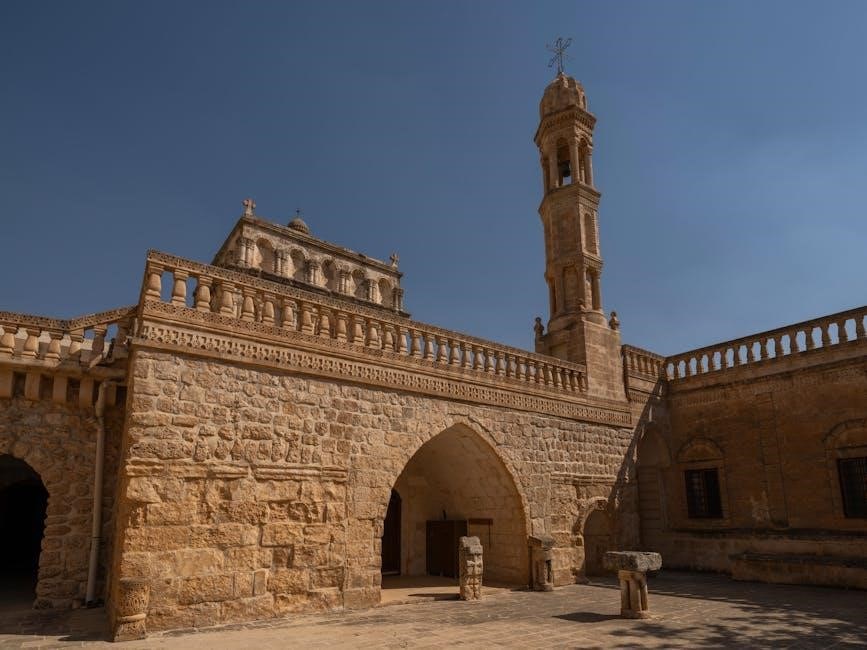
Significance of Discovering Jesus in the Old Testament
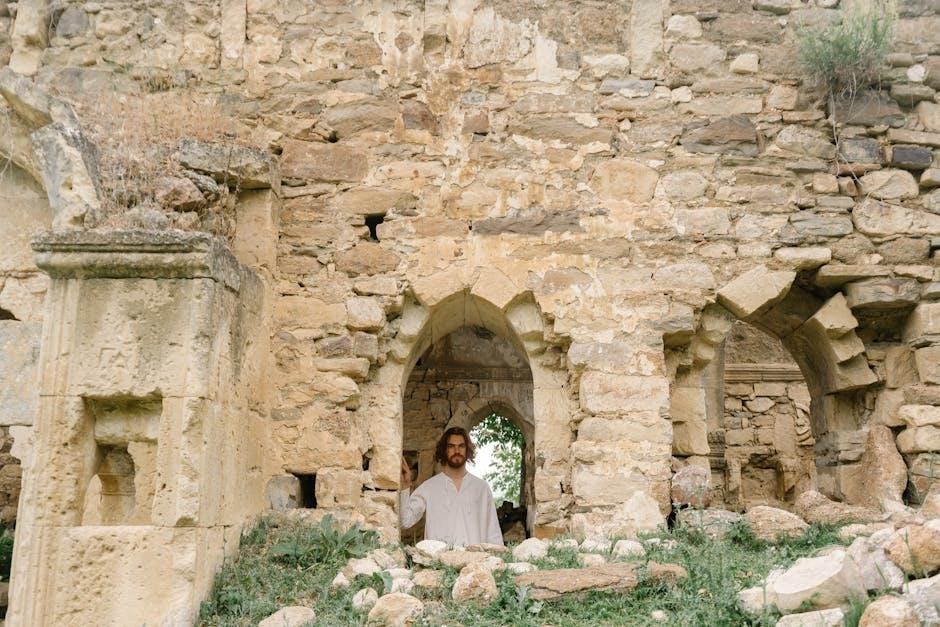
Recognizing Jesus in the Old Testament deepens faith by revealing how His life, death, and resurrection fulfill ancient prophecies and symbolic representations. It unites both Testaments, showing a continuous redemptive story centered on Christ. This understanding enriches one’s walk with God, transforming how Scripture is perceived and applied. By tracing Jesus in the Old Testament, believers gain insights into His divine mission and the historical, cultural context of His ministry, fostering a deeper appreciation for the unity of God’s plan and the ultimate redemption He provides.
Overview of Theological Relevance
Exploring Jesus in the Old Testament holds profound theological significance, as it reveals how He is the fulfillment of ancient prophecies, types, and shadows. This study underscores the unity of Scripture, demonstrating how the Old Testament points to Christ as the ultimate redemption. It highlights God’s sovereignty in weaving a cohesive narrative across both Testaments, with Jesus as the central figure. Understanding this connection deepens one’s faith, clarifies Christ’s mission, and illuminates the divine plan of salvation, making the Old Testament essential for grasping the fullness of God’s redemptive work in Jesus Christ.
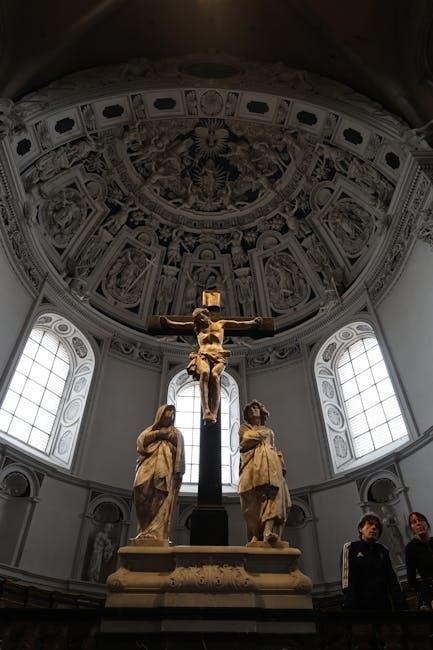
Typological Representations of Jesus
Jesus is prefigured in Old Testament figures like Adam, Melchizedek, Isaac, and Joseph, who symbolize His divine role, sacrifice, and redemptive mission, revealing God’s plan through history.
Adam as a Type of Christ
Adam, as the first man, serves as a typological representation of Christ, highlighting the transition from sin to redemption. Like Adam, Christ was sinless and represented humanity, but while Adam’s disobedience brought sin, Christ’s obedience brought salvation. This parallel underscores the concept of federal headship, where Adam’s failure contrasts with Christ’s triumph. The Old Testament’s account of Adam lays the groundwork for understanding Christ as the “Second Adam,” who restores humanity’s relationship with God. This typology emphasizes Christ’s redemptive mission and the fulfillment of God’s covenant promises, offering insights into the deeper theological connections between the Old and New Testaments.
Melchizedek and the Priesthood of Christ
Melchizedek, a mysterious figure in Genesis, is introduced as both a king and a priest, offering a unique prefiguration of Christ’s priesthood. In Psalms, his priesthood is eternal, transcending the Levitical order. Hebrews highlights Melchizedek as a type of Christ, emphasizing His superior priesthood. Unlike earthly priests, Christ’s priesthood is eternal, sinless, and redemptive, fulfilling the shadowy representations of the Old Testament. This connection underscores the theological link between Melchizedek’s role and Christ’s divine mission, illustrating how the Old Testament foreshadows the redemptive plan realized in Jesus Christ, the ultimate High Priest.
Isaac and the Sacrificial Nature of Christ
Isaac’s willingness to be sacrificed by Abraham in Genesis 22 profoundly foreshadows Christ’s sacrificial nature. Like Isaac, Jesus carried the “wood” of His cross willingly, symbolizing obedience and surrender. Both were destined for sacrifice by their fathers, yet both experiences culminated in redemption. Isaac’s story illustrates God’s provision, as a ram replaced him, mirroring how Christ became the ultimate substitute for humanity. This Old Testament narrative highlights the sacrificial love of God, pointing to Jesus as the fulfillment of the divine plan for redemption, deepening our understanding of Christ’s mission and the significance of His sacrifice.
Joseph as a Symbol of Jesus’ Life and Ministry
Joseph’s life mirrors Jesus’ journey, offering a striking typological representation. Both were beloved sons, rejected by their own, and unjustly betrayed. Joseph’s descent into Egypt and rise to leadership foreshadow Jesus’ humiliation and exaltation. Like Joseph, Jesus provided salvation to His people, forgiving those who wronged Him. Joseph’s role as a provider during famine parallels Jesus as the Bread of Life, sustaining humanity spiritually. This parallel highlights divine redemption and God’s sovereignty, demonstrating how Joseph’s story prefigures the redemptive mission of Christ, enriching our understanding of His purpose and divine plan.
Prophetic Fulfillments
Isaiah 53, Micah’s Bethlehem prophecy, and Zechariah’s vision of the Messiah are key Old Testament passages that point to Jesus as the fulfillment of God’s redemptive plan.
Isaiah’s Prophecies of the Messiah
Isaiah’s prophecies are central to understanding Jesus as the Messiah. In Isaiah 53, the prophet describes a suffering servant who bears the sins of many, a direct foreshadowing of Jesus’ crucifixion. Isaiah also foretells the Messiah’s birth of a virgin (Isaiah 7:14) and His role as a light to the nations (Isaiah 49:6). These prophecies highlight Jesus’ divine mission and redemptive purpose, fulfilling ancient promises and establishing Him as the Savior of humanity. Studying Isaiah’s visions provides profound insights into Jesus’ identity and the fulfillment of God’s plan.
Psalm 22 and the Crucifixion
Psalm 22 contains vivid descriptions of the crucifixion, written centuries before the event. David’s words prophetically depict a man surrounded by enemies, his hands and feet pierced, and his garments divided by lot (Psalm 22:16-18). These details align with the New Testament accounts of Jesus’ crucifixion, showcasing His fulfillment of Old Testament prophecy. The psalm also expresses deep anguish and trust in God, reflecting Jesus’ emotional state on the cross. This connection underscores the messianic nature of the psalm and its significance in understanding Jesus’ sacrifice as the ultimate act of redemption.
Zechariah’s Vision of the Messiah
Zechariah’s prophecies vividly depict the Messiah’s arrival and mission, offering a profound connection to Jesus Christ. In Zechariah 9:9, the prophet describes the Messiah entering Jerusalem humbly on a donkey, a scene fulfilled in Jesus’ triumphal entry. Additionally, Zechariah 12:10 foretells the piercing of the Messiah, symbolizing the crucifixion and the outpouring of divine grace. These visions emphasize Jesus as the suffering Savior and King, highlighting His role in redemption. Zechariah’s imagery underscores the messianic hope and its fulfillment in Christ, bridging the Old and New Testaments with clarity and purpose.
Micah’s Prophecy of Bethlehem
Micah 5:2 famously foretells the Messiah’s birthplace as Bethlehem, a small, seemingly insignificant town. This prophecy directly links to Jesus’ birth in Bethlehem, fulfilling a key Old Testament prediction. Micah emphasizes Bethlehem’s humble status while highlighting its divine significance, mirroring Jesus’ arrival as the humble yet mighty Savior. This prophecy underscores God’s precise plan and fulfillment, reinforcing Jesus’ identity as the Messiah. Micah’s words bridge the Old and New Testaments, showcasing Bethlehem’s pivotal role in the redemptive story of Christ.
Historical and Cultural Context
The Old Testament provides the historical and cultural backdrop for Jesus’ ministry, rooted in first-century Israel’s traditions and expectations, shaping His role as the Messiah.
Jewish Expectations of the Messiah
Jewish expectations of the Messiah were deeply rooted in Old Testament prophecies, anticipating a King who would restore Israel and bring divine redemption, a hope fulfilled in Jesus Christ.
Cultural Significance of Jesus’ Ministry
Jesus’ ministry was deeply intertwined with Jewish culture, fulfilling Old Testament prophecies and symbols, such as the Passover Lamb, which highlighted His role in redemption and salvation for all humanity.
Historical Events Foreshadowing Jesus
The Old Testament is filled with historical events that foreshadow Jesus’ life and ministry. The Exodus, a symbol of redemption, prefigures Christ’s deliverance of humanity from sin. The Passover lamb, innocent and slain, points to Jesus as the Lamb of God, who would take away the sin of the world. Additionally, the construction of the Tabernacle, with its intricate symbolism, reflects Jesus’ role as the ultimate sanctuary and sacrifice. These events create a rich tapestry that prepares humanity for the coming Messiah, emphasizing His divine purpose and redemptive plan.

Symbols and Foreshadowing
The Old Testament is rich with symbols like the Passover Lamb, Exodus, and Tabernacle, which foreshadow Jesus’ redemption and sacrificial nature, revealing His divine plan clearly.

The Passover Lamb
The Passover Lamb, central to the Exodus story, symbolizes Jesus as the ultimate sacrifice for humanity’s sins. In Exodus, the lamb’s blood spared the Israelites from death, foreshadowing Christ’s redemptive death. John the Baptist declared Jesus as the “Lamb of God who takes away the sin of the world,” and the apostles affirmed this symbolism. The Passover Lamb represents God’s plan to save His people, with Jesus fulfilling this role perfectly. This connection deepens the understanding of Jesus’ sacrificial nature and the theological unity between the Old and New Testaments, highlighting redemption and salvation through faith in Him.
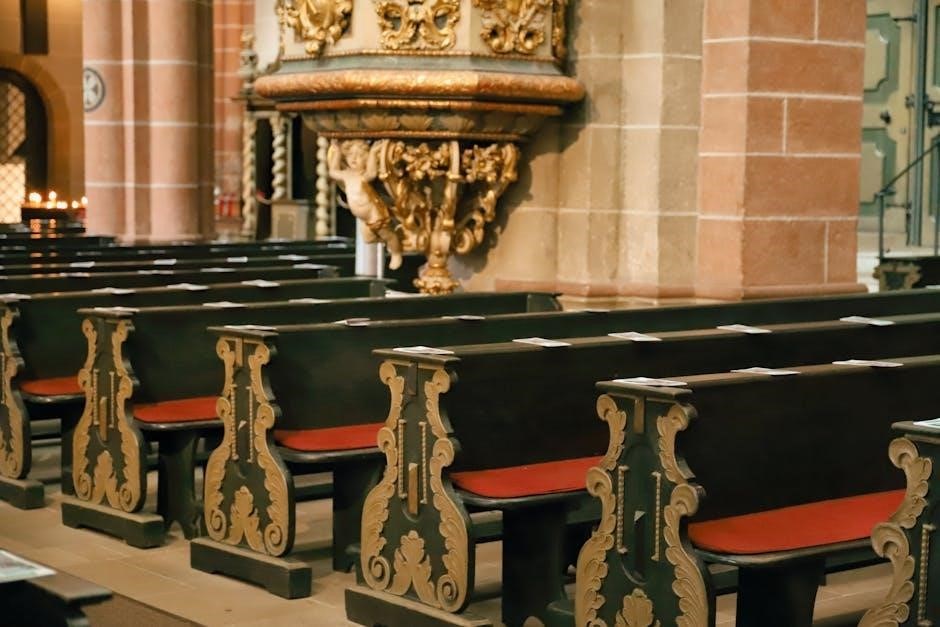
The Exodus as a Symbol of Redemption
The Exodus, Israel’s deliverance from Egypt, serves as a powerful symbol of redemption, mirroring Jesus’ mission to save humanity. Just as God freed His people through the parted Red Sea, Christ liberates believers from sin and spiritual bondage. The Exodus journey through the wilderness reflects the Christian walk of faith, with Jesus as the ultimate Deliverer. This historical event foreshadows the spiritual redemption achieved through Christ’s sacrifice, emphasizing God’s faithfulness and the transformative power of divine rescue in both the Old and New Testaments, offering hope and salvation for all people.
The Tabernacle and ItsSymbolism
The Tabernacle and Its Symbolism
The Tabernacle, a portable place of worship, symbolizes Christ’s redemptive work. Its structure and furnishings, like the altar and mercy seat, prefigure Jesus as the ultimate sacrifice and mediator. The veil separating the Holy of Holies represents sin’s barrier, torn at Christ’s crucifixion, granting access to God. The Tabernacle’s design reflects divine presence and humanity’s reconciliation, with Jesus as the true Temple, embodying God’s dwelling among people. This Old Testament symbol illuminates Christ’s role in bridging heaven and earth, fulfilling the Tabernacle’s purpose through His life, death, and resurrection.

Christological Themes
Christological themes in the Old Testament reveal Jesus as the fulfillment of redemption, salvation, and covenant promises, embodying the Messiah’s divine purpose and humanity’s reconciliation with God.
Redemption and Salvation
The Old Testament intricately weaves themes of redemption and salvation, ultimately pointing to Jesus Christ as the fulfillment of God’s plan. From the Passover lamb to the Exodus, these symbols foreshadow Christ’s sacrifice. Isaiah 53 vividly describes Jesus’ suffering for humanity’s redemption, while the covenant promises establish a framework for salvation. The crucifixion and resurrection embody the climax of this redemptive narrative, offering salvation to all through faith. Studying these themes reveals Jesus as the ultimate Redeemer, bridging the gap between Old Testament shadows and New Testament realities, providing eternal salvation for humanity.
The Covenant Promises
The Old Testament covenants establish a divine framework for understanding Jesus’ mission. The Abrahamic covenant promises a Messiah for all nations, while the Davidic covenant foretells a king who will reign forever. These promises find fulfillment in Jesus, who embodies the ultimate covenant of grace. Through His life, death, and resurrection, Jesus extends salvation, embodying the true Bread of Life and the Lamb of God. The covenants symbolize God’s enduring faithfulness, highlighting Jesus as the fulfillment of Old Testament promises, ensuring eternal salvation and a restored relationship with humanity.
The Role of the Messiah
The Old Testament vividly portrays the Messiah as a divine figure destined to redeem Israel and humanity. Prophets like Isaiah and Micah foretell His role as a suffering servant, king, and savior. Jesus fulfills these prophecies, embodying the Messiah’s dual nature: divine and human. His mission is rooted in the Davidic covenant, promising an eternal kingdom. Through His life, death, and resurrection, Jesus completes the Messiah’s role, bringing salvation and restoring God’s people. This fulfillment highlights Jesus as the ultimate redeemer, aligning with Old Testament expectations and offering eternal hope to all nations.
Practical Implications
Studying the Old Testament deepens our connection to Christ, offering practical lessons for faith and life. Resources like devotionals and study guides provide accessible tools for personal or group exploration, enriching spiritual growth and understanding.
Enhancing Faith Through Study
Studying the Old Testament reveals Jesus as the fulfillment of prophecies and symbols, deepening faith and understanding. Resources like The One Year Discovering Jesus in the Old Testament Devotional offer daily insights, helping believers connect biblical history to Christ’s mission. This journey enriches spiritual growth, providing practical lessons for modern life while highlighting the unity of Scripture. By exploring these teachings, individuals gain a profound appreciation for God’s redemptive plan, ultimately strengthening their relationship with Christ and fostering a deeper walk of faith grounded in biblical truths.
Applying Old Testament Lessons
Old Testament lessons provide timeless wisdom for modern Christian living. Stories like Joseph’s humility and Isaiah’s prophecies illustrate faith, forgiveness, and trust in God. These narratives, fulfilled in Christ, offer practical guidance for ethical decisions, relationships, and spiritual growth. By reflecting on these teachings, believers can apply principles such as compassion, obedience, and redemption to their daily lives, drawing closer to God and embodying Christ’s love in their communities. Such application bridges ancient truths with contemporary challenges, enriching faith and fostering a lifestyle rooted in biblical values.
Deepening Understanding of Christ
Studying the Old Testament enriches our understanding of Christ by revealing how His life, death, and resurrection fulfill ancient prophecies and symbolic representations. Through typological imagery, such as the Passover Lamb and the Exodus, believers gain profound insights into Christ’s redemptive mission. The Old Testament provides a theological framework that highlights Jesus’ divine identity and purpose, offering a deeper appreciation of His sacrifice and victory. This connection between the testaments underscores the continuity of God’s plan, enabling believers to see Christ as the ultimate fulfillment of Old Testament promises and symbols.
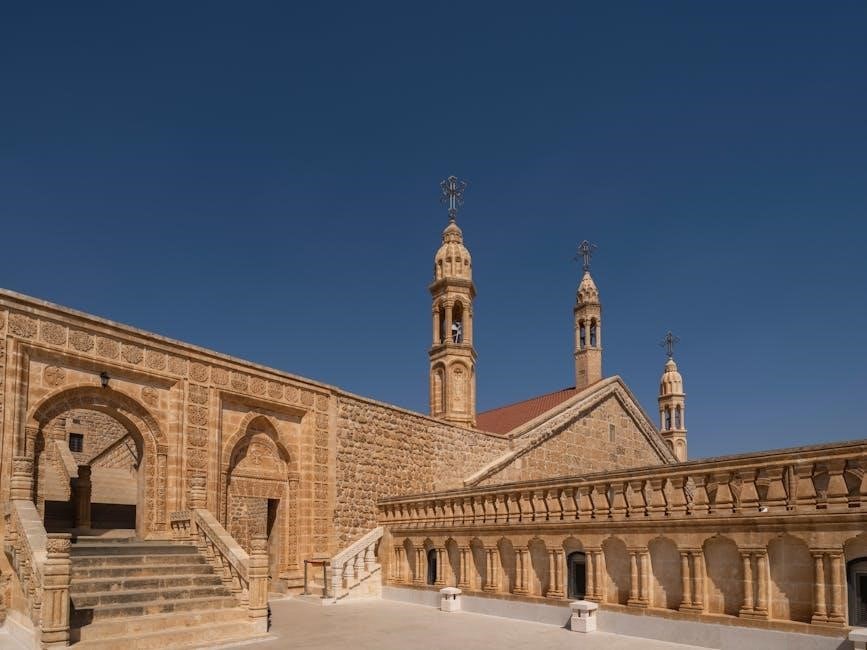
Resources and References
Explore books like “The One Year Discovering Jesus in the Old Testament” and “Seeing Christ in the Old Testament” for deeper insights. Downloadable PDF guides and online studies provide accessible tools for scriptural exploration and application.
Recommended Books and Studies
Key resources include “The One Year Discovering Jesus in the Old Testament” devotional and “Seeing Christ in the Old Testament” (PDFDrive). These works offer profound insights into biblical typology and prophecy, highlighting Jesus as the fulfillment of Old Testament themes. Scholars like N.T. Wright provide detailed analyses of Jesus’ role within Jewish history and theology. Additional studies, such as “Christ in the Old Testament,” explore symbolic representations and prophetic fulfillments. Available in PDF formats, these materials are easily accessible for in-depth study and reflection, enriching one’s understanding of Christ’s redemptive mission.
Online Materials and PDFs
Various online resources and PDFs provide in-depth explorations of Jesus in the Old Testament. Titles like “Seeing Christ in the Old Testament” (available on PDFDrive) and “The One Year Discovering Jesus in the Old Testament” devotional offer comprehensive studies. These materials highlight prophetic fulfillments, typological representations, and symbolic foreshadowing. Additionally, PDFs such as “Christ in the Old Testament” and scholarly articles from platforms like DB Forum discuss Jesus’ role within biblical history. These accessible resources enable deeper biblical study and reflection, making them invaluable for those seeking to understand Jesus’ presence throughout the Old Testament narrative.
Scripture References and Tools
Key resources for studying Jesus in the Old Testament include PDFs like “The One Year Discovering Jesus in the Old Testament” devotional and scholarly articles. These materials often reference pivotal passages such as Isaiah 53, Psalm 22, and Micah 5:2, which prophetically point to Christ. Bible study guides and online platforms provide tools to explore typological representations, such as the Passover Lamb and the Tabernacle, highlighting their connection to Jesus. These resources offer a structured approach to understanding scriptural links, making the study of Jesus in the Old Testament both accessible and enriching for believers and scholars alike.

Seeing Jesus in the Old Testament enriches faith by revealing His redemptive plan, fulfilled prophecies, and symbolic representations, deepening understanding of His divine mission and eternal significance.
The Old Testament intricately points to Jesus Christ through typological representations, prophetic fulfillments, and symbolic foreshadowing. Key examples include the Passover Lamb, Isaac’s sacrifice, and the Tabernacle’s design, all mirroring Christ’s redemption. Prophets like Isaiah and Micah foretold His birth, ministry, and crucifixion, while historical events like the Exodus symbolized salvation. Understanding these connections deepens faith, revealing Jesus as the fulfillment of God’s redemptive plan. Resources such as devotionals and PDF studies aid in exploring these themes, highlighting the Old Testament’s essential role in comprehending Christ’s mission and divine purpose.
Final Thoughts on the Importance
Recognizing Jesus in the Old Testament unifies the Bible’s narrative, revealing His central role in God’s redemptive plan. This study enriches faith by connecting prophecies, symbols, and historical events to Christ’s mission. Resources like devotionals and PDF guides provide deeper insights, helping believers appreciate the continuity of God’s plan. Understanding these connections fosters a holistic view of Scripture, affirming Jesus as the fulfillment of Old Testament promises and the cornerstone of God’s salvation story. This deeper understanding strengthens devotion and illuminates the profound significance of Christ in all of Scripture.